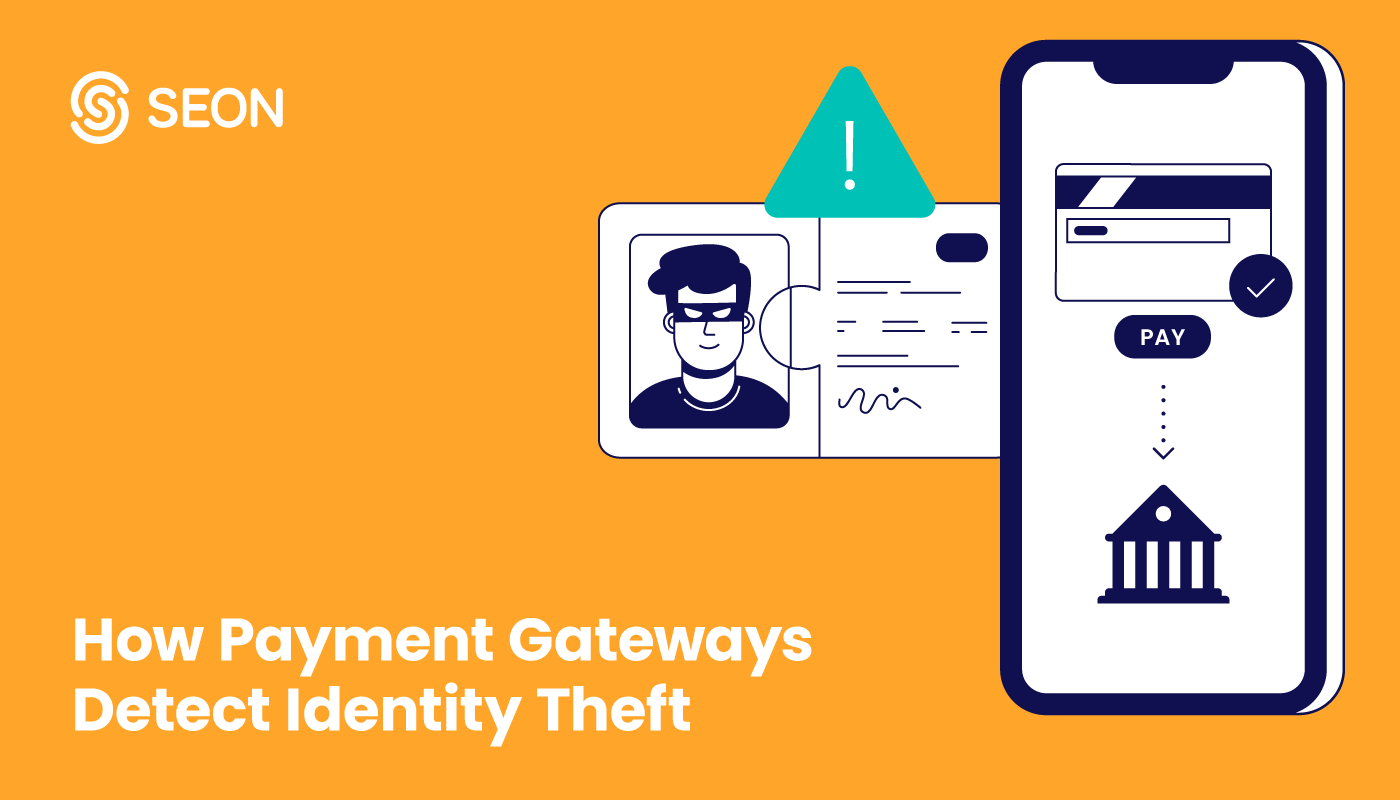As digital payments proliferate, so do the risks. In 2025, nearly 8 in 10 organizations reported experiencing payment fraud attempts, underscoring the growing sophistication of attacks targeting online transactions. With payment gateways often sitting at the frontline of these threats, businesses are increasingly turning to payment fraud detection software to stay protected.
These solutions offer real-time monitoring, advanced analytics and the flexibility to adapt to evolving fraud tactics. While many payment gateways and acquirers include basic fraud screening, they may fall short of the depth and customization provided by dedicated tools. This article explores how to evaluate your options and build a fraud prevention strategy that works for your business.
What Exactly Is a Payment Gateway?
A payment gateway securely authenticates customer card details during online purchases, acting as the digital bridge between buyer, merchant and processor. Originally simple online terminals, gateways evolved by focusing on user experience and merchant tools rather than competing with major processors. Today, they’re indispensable to eCommerce, offering not just security, but features that streamline checkout and build trust.
Payment Processor vs Payment Gateway
Before discussing payment fraud prevention, let’s zoom out to clearly define a few important terms. First, it helps to understand the subtle differences between payment gateways and payment processors.
- A payment processor analyzes and sends transaction data (card number, issuing bank info, etc..).
- A payment gateway does all the above and also authorizes the transfer of funds.
The authorization part is the key difference, specifically in the card-not-present world (online stores).
Payment gateways are therefore a good place to implement security checks, whether it’s SSL encryption or a check for fraudulent purchases.
What Is Payment Gateway Fraud?
Payment gateways are central to online transactions, ensuring payments are processed securely and accurately. But as digital commerce accelerates, so does the risk of fraud. Virtually every business that accepts online payments is a potential target.
Payment gateway fraud refers to unauthorized transactions executed through a gateway, typically using stolen or synthetic card data. Because gateways serve as the bridge between customers, merchants and payment processors, they present an attractive target for bad actors seeking to exploit any weak links in the chain.
As fraud techniques become more sophisticated, protecting this critical layer of the payment infrastructure has never been more vital.
How Does Fraud Happen via a Payment Gateway?
Since a payment gateway is essentially a middleman between the merchant and its customers, any time a fraudster looks to conduct payment gateway fraud they need to bypass any fraud detection software.
Some of the most common forms of payment gateway fraud are:
- Payment gateway identity theft: Criminals use stolen personal and payment information to make unauthorized purchases.
- BIN attacks: Using the first six digits of a card (aka. the Bank Identification Number), attackers generate and test large volumes of card number combinations to find a valid one.
- Card testing: Similar to BIN attacks, this involves repeatedly submitting small transactions to verify which stolen card details are still active.
- Account takeover: Fraudsters gain access to a legitimate user’s account (often via leaked credentials) and use stored payment details to make purchases or drain loyalty rewards.
Payment Gateway Fraud Detection
Offering multiple payment gateways helps merchants meet customer preferences and optimize checkout flow. From Stripe and PayPal to Klarna and Amazon Pay, recognizable gateways not only increase conversion but also signal trust. But with more gateways comes greater exposure to fraud, and a stronger need for intelligent, frictionless protection.
Here are key tools that can help bolster trust and minimize fraud risk without disrupting user experience:
- Device intelligence: By analyzing hardware and software configurations, such as browsers, plugins and operating systems, you can identify suspicious behavior or repeated fraud attempts across different accounts. It’s an effective way to detect emulators and spoofing tools used to mask identity.
- IP analysis: Monitoring IP addresses can reveal hidden risks, such as connections via VPNs, proxies or TOR networks. Correlating this with geolocation data helps flag anomalies, such as logins from high-risk regions or impossible travel scenarios.
- Digital footprint analysis: Real-time checks for behavioral and identity signals like social media presence, domain quality or user activity can distinguish legitimate customers from synthetic identities, enhancing decision accuracy without added friction.
- Email analysis: A reverse email lookup can provide powerful risk insights. Signals include whether it’s disposable or free, how old the domain is, and whether it has been exposed in known data breaches.
- Card Verification Value (CVV): Still a baseline layer of protection, CVV checks ensure the buyer physically possesses the card. While not foolproof, they remain a standard part of most payment gateway setups.
- 3-D Secure (3DS2): An evolution of multi-factor authentication for card payments, 3DS2 adds a verification step via SMS, app notification or biometric input, balancing fraud protection with regulatory compliance under PSD2 and similar frameworks.
Talk to our experts to secure your payment flows, detect fake transactions, and block high-risk users — without relying on built-in fraud tools.
Speak with a risk expert
Payment Gateways with Built-In Fraud Tools
Many popular gateways like Stripe, Worldpay, and PayPal offer built-in fraud prevention tools that scan transaction data, apply rules and decide whether to approve, decline, or flag transactions for review. While convenient, these solutions may not go far enough for businesses seeking a robust payment gateway fraud solution.
Advantages of One-Stop-Shop Anti-Fraud Solutions
Built-in tools are easy to deploy, often requiring no extra integration. For small teams or merchants without dedicated risk expertise, this plug-and-play convenience — whether through Stripe Radar, FraudSight or Shopify’s Fraud Filter — is attractive. Pricing models are usually tied to transaction volume, making them viable for smaller or seasonal businesses. Additionally, these providers benefit from the amount of historica card data they possess: Stripe, for example, claims it has seen 89% of all cards processed on its network before.
Disadvantages of One-Stop-Shop Anti-Fraud Solutions
Built-in fraud tools tie you to a single provider, making it hard to switch or scale. If you change gateways, you lose custom rules and have to rebuild from scratch — a major limitation when entering new markets or negotiating better rates.
These tools often rely on basic data and generic rules, with little transparency in how decisions are made. Worse, payment providers are motivated to approve transactions, not block them — leaving merchants to deal with the cost of fraud and chargebacks.
Dedicated Fraud Prevention vs Built-In One-Stop-Shops
Built-in tools offer speed and simplicity but are typically rigid, offering limited customization and no portability between gateways. They prioritize convenience and can help with basic transaction fraud detection, but often at the expense of long-term flexibility and control.
Dedicated solutions give you the freedom to tailor rules, enrich data and maintain consistency across providers, making them better suited for businesses with evolving fraud risks or growth plans, a key factor when deciding between building or buying fraud prevention.
Screen payments in real time against global watchlists and sanctions — before money moves.
Payment Screening Soluion
How SEON Helps Your Fraud Detection in Payment Gateways
SEON is designed to strengthen your fraud prevention without disrupting your existing payment flow. Whether you’re using an all-in-one gateway or a complex payment orchestration setup, our modular solution integrates easily, enhancing protection with powerful, real-time insights.
At the core of SEON’s approach are features like device intelligence and digital footprint analysis examining phone, email and IP data, in addition to a fully customizable risk scoring engine, delivering real-time insights to help you assess risk with greater accuracy. Our transparent machine learning models support smarter decision-making, reducing false positives and manual reviews while adapting to emerging fraud patterns.
As more payment providers integrate SEON directly into their platforms, merchants benefit from fewer chargebacks, frictionless checkouts and higher approval rates for legitimate customers. Whether you deploy a single module or a comprehensive solution, SEON empowers you to detect fraud earlier, act faster and grow securely at scale.
FAQ
While some gateways offer protection to help your business process more qualified transactions, developing a fraud prevention stack to accompany what’s available will help minimize risk.
If you’re an online merchant, more gateways give your customers more opportunities to pay with their favorite payment method, thus boosting their user experience.
You might also be interested in reading about…
- SEON: Ecommerce Fraud Prevention
- SEON: How to Fight Return Fraud
- SEON: Transaction Monitoring Software: How it Works and How to Use It
Learn more about:
Digital Footprinting | Device Fingerprinting | Fraud Scoring








